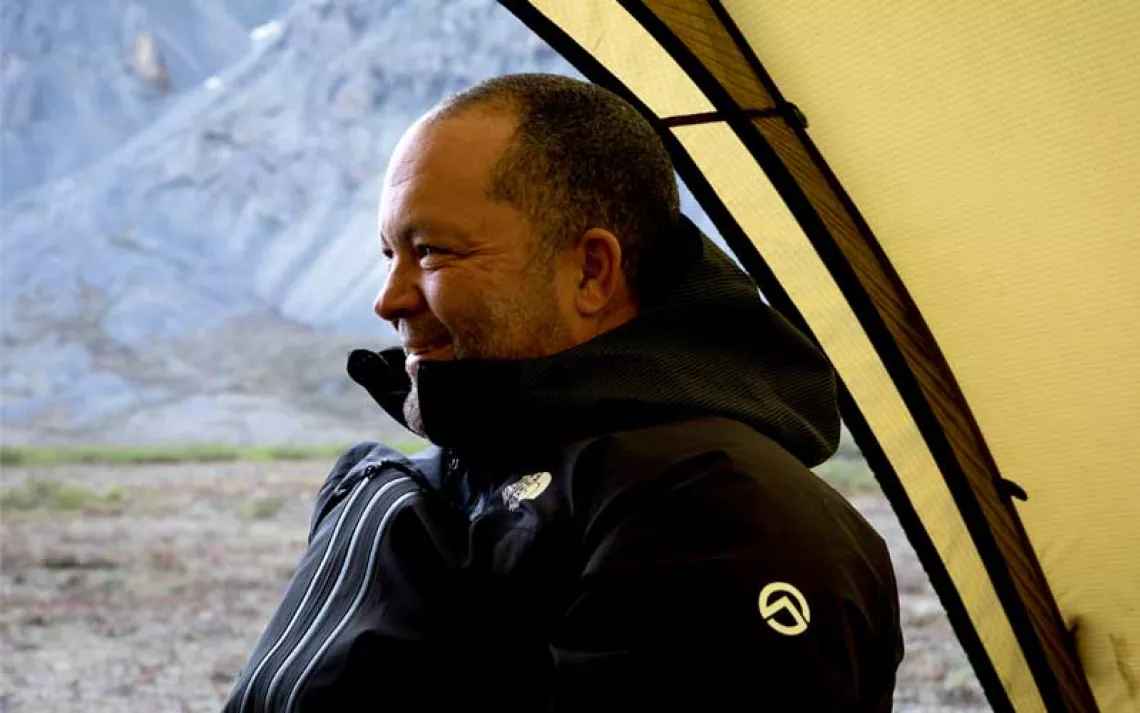Wildfires Shroud Southeast in Smoke

The Boteler Fire in western North Carolina’s Nantahala National Forest | Photo courtesy of the U.S. Forest Service
The forests of the southern Appalachians are full of blazing colors in a normal fall. This year, they’re actually blazing.
More than 133,000 acres of the southeastern highlands were on fire this week, with conditions worsened by what’s shaping up to be an epic drought. The resulting smoke has left a thick, acrid haze hanging over cities far from the fire lines, driving many people indoors—even sending them to hospitals.
“We haven’t seen any rain for many, many weeks, and conditions are continuing to be very dry,” said Sean Collins, a spokesman for the team battling the 9,000-acre Boteler Fire in western North Carolina’s Nantahala National Forest. “The leaves are very dry in the trees, and now they are beginning to fall onto the ground,” he said. “One of the issues we have is those dry leaves are going over containment lines, so crews are having to be very vigilant.”
Not far from there, the Tellico Fire has burned through nearly 14,000 acres of woodland. In northern Georgia, the Rough Ridge Fire has scorched nearly 28,000 acres in the Chattahoochee-Oconee National Forest north of Atlanta. To the east, the Rock Mountain Fire grew by about 2,000 acres between Friday and Monday, to 11,000-plus acres, and residents of several nearby communities have been told to get ready to evacuate. Several dozen smaller fires—some naturally caused, some man-made—are burning throughout the region as well.
Firefighters got a break on Friday, with low pressure and light winds that kept the fires in check and let the smoke rise rather than settling in forest valleys. That also allowed aircraft to get a better look at the hot spots and dump water on them, Collins said. But it also means brush fuels warm up and dry out, putting them at higher risk of catching fire and setting off more nearby trees.
A weekend cold front brought temperatures back to more fall-like conditions from the high 70s seen in much of the Southeast last week. But it brought no significant rainfall while whipping up winds that gusted to more than 35 miles per hour in some places.
The fires are heavily impacting a region that is usually a mecca for outdoor recreation in the fall. Normally, at this time of year rafters and kayakers flock to the swift-running rivers that lace the hills, hikers and campers traverse the Appalachian Trail, and tourists come to gawk at the foliage.
But the blazes have closed 70 miles of the Appalachian Trail in Georgia and North Carolina. Campfires are banned on the route as far north as Virginia. And satellite photos show plumes of smoke stretching from Chattanooga, Tennessee, to Charleston, South Carolina, more than 400 miles away.
For Jimmy Knight, an avid cyclist in picturesque Asheville, North Carolina, the smoke has forced him to cut back his usual rides on the scenic Blue Ridge Parkway. “Two or three days ago, Knight said, “the smoke was so thick that as you drove through town, where you would normally have this lovely vista of mountains and a good cross view of the valley, you couldn’t see anything. You couldn’t even see the buildings downtown, a quarter mile away.”
On an outing last Sunday, “my nose was burning,” Knight said. “My throat was burning a little bit. Climbing on the parkway was kind of problematic.” Even yard work proved difficult. And nobody in his office can remember the last good rain. “I want to say maybe early September.”
Half of Georgia, two-thirds of Alabama, and the neighboring parts of Tennessee and North Carolina now fall into the most extreme categories of drought, federal agencies reported this week. It’s been an exceptionally hot and dry summer and fall, capping a year that’s expected to set a third straight global heat record, and there’s little relief in sight.
Between September and November, cities in the area typically get about a foot of rain, according to National Weather Service data. This year, Atlanta has seen less than four inches in those months, and less than a quarter inch since October 1. Birmingham, Alabama, just marked 60 days without a measurable rainfall. And less than two inches has fallen on Chattanooga, where complaints about smoke are replacing the more typical autumn cold and flu symptoms in emergency rooms.
“It’s almost spring weather here. It’s the kind of weather where you would have your windows open if it weren’t smoky outside,” said Dr. Rob Hamilton, medical director of emergency services at the Chattanooga-based Erlanger Health System. “But I’m having to keep my house kind of locked up, because if I open the door, it smells like I have a campfire burning in my living room.”
Erlanger treated nearly 150 people for breathing difficulties in the first half of November, according to figures from the hospital. Not all of those may be due to smoke, but more people have turned up complaining about everything from headaches to chest pains when the wind shifts toward town, Erlanger said.
“It’s shifted the type of visits we’re getting. Instead of a normal November, when we have visits related to it being cold outside, we’re now getting visits related to smoke exposure,” he said. People with chronic conditions like emphysema or asthma are having more problems than usual, and even active, healthy people are staying in. “We’re an outdoor city that’s been driven indoors."
 The Magazine of The Sierra Club
The Magazine of The Sierra Club



